Recent Articles
Popular Makes
Body Types
10 Tips: How to Drive on Icy Roads
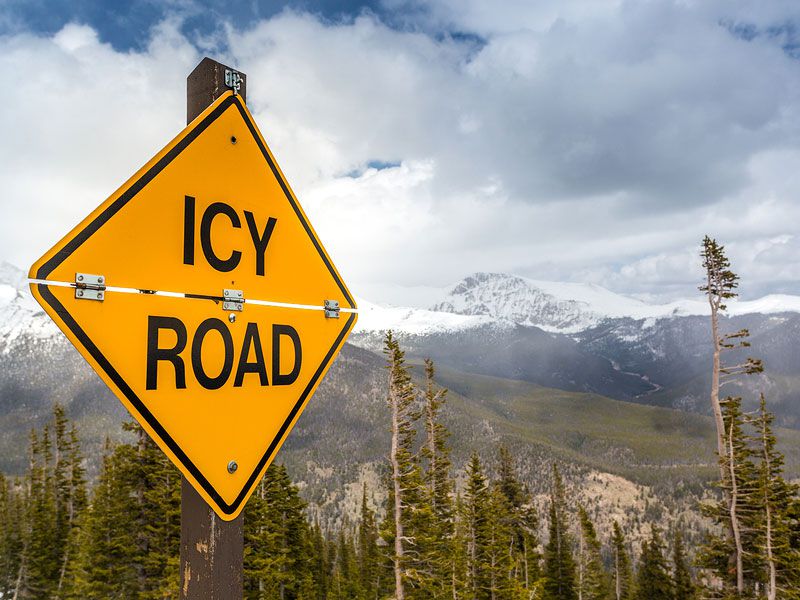
Icy Road Sign ・ Photo by Bigstock
For some people (and some entire states), driving on icy roads is almost an everyday occurence in the winter months, but others may only experience an icy road on the rare occasion, or never at all in their entire time driving. In either case, it helps to be prepared and know how to drive on icy roads just in case the situation does suddenly arise. While experience and familiarity do help, sometimes they make you start to take the situation for granted and begin to ignore the risk. Whether you think you’re already an expert, just need a refresher, or haven’t ever had the pleasure of driving on an icy road, we’ve got you covered with 10 tips that, with some luck, should help you get where you’re going safely.
10) Stay Home
Obviously, there are times when you need to drive, but if the roads are icy the safest thing to do is to stay home if at all possible (or, if possible, use the weather as an excuse to get some exercise and walk). If you do have to venture out on an icy day, try and wait until the plows have gone out and done their best to clean up the mess. Take advantage of any local websites that provide information on the current road conditions, keep up to date with the weather forecasts, and, if possible, use long-range forecasts to schedule trips in advance and avoid storms and bad weather. If all this fails and you absolutely need to drive on icy roads, make sure to follow the rest of our tips.
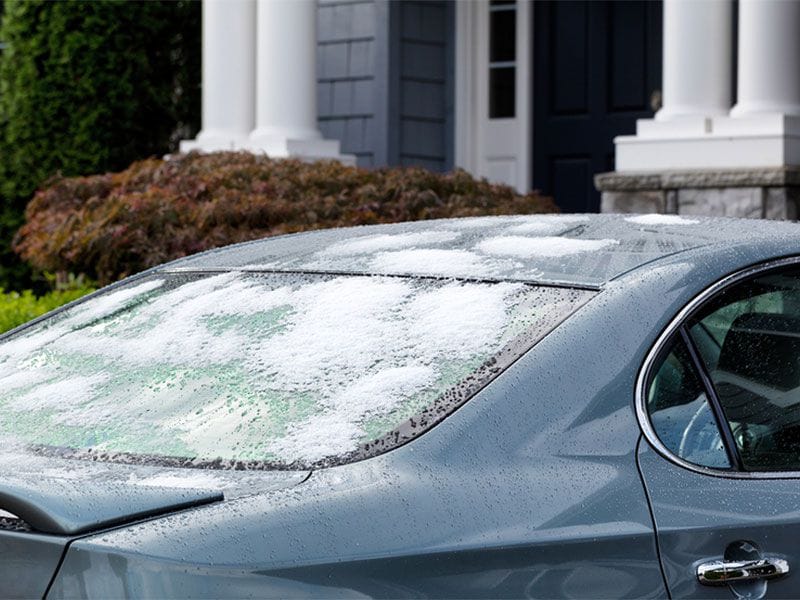
Photo by Bigstock
9) Good Tires and Up-To-Date Maintenance
The best way to stay in control on winter roads is to use a matching set of four winter tires, inflated to the pressure recommended by the vehicle’s manufacturer. Winter tires use a rubber compound that provides better grip in cold weather, and perform much better on icy roads than all-season tires. Studs work well on icy roads but are noisy and can affect performance slightly, especially on wet roads, making them best suited to areas with regular ice. It’s also a good idea to ensure that the rest of your car’s maintenance is up to date in order to help avoid breakdowns. Particular areas to pay attention to include the antifreeze, brakes, lights, climate control system, rear defroster, and wipers (along with a good supply of winter washer fluid).
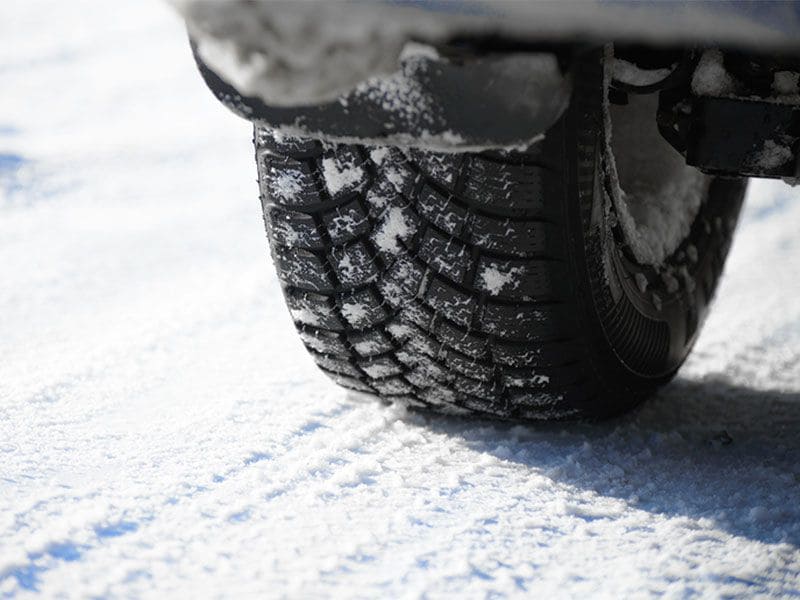
Photo by Bigstock
8) Be Prepared (Just In Case)
It’s a good idea to keep a basic survival kit containing some non-perishable food, fresh water, a flashlight, a first aid kit and a whistle inside your car at all times. In the winter, you should add some tealights (along with a good safe candle holder) as a source of heat and a dish that can be used to melt snow. Also inside the car, you should have an emergency blanket or two, while in your trunk you should place some sand (or non-clumping kitty litter), a shovel, an ice scraper, booster cables, extra windshield washer fluid and something bright (like a flag) that you can use to attract attention. When travelling on icy roads, wear winter clothing, try and keep your fuel tank at least half full, and keep a cell phone handy (and charged).
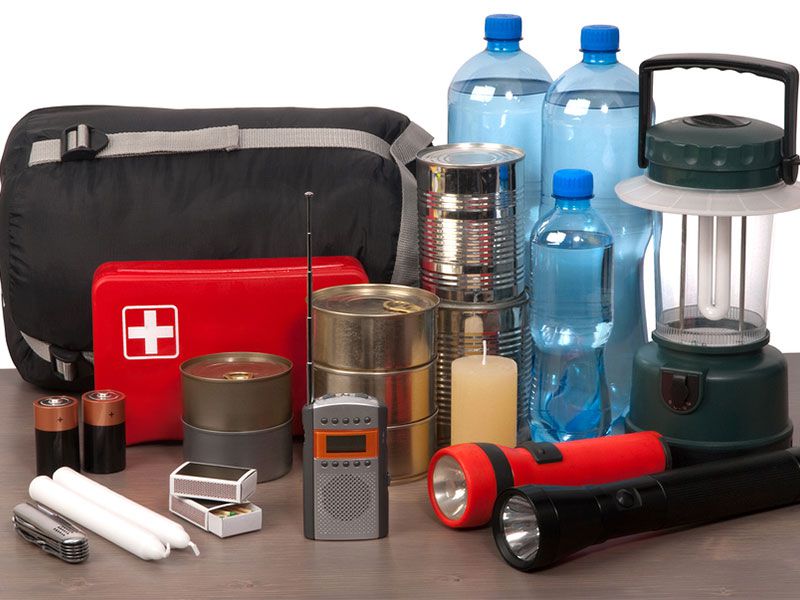
Photo by Bigstock
7) Practice
They say that practice makes perfect, which isn’t quite true, but it sure can help. In a safe area away from other cars and obstacles (including lamp posts and curbs), practice recovering from skids at a slow speed. Look where you want the car to go and steer in that direction, but be ready to "catch" the slide if the front wheels find grip; otherwise you’ll end up in a skid in the opposite direction. Be aware that all cars react differently, especially a front-wheel drive car compared to a rear-wheel drive one. Once you become adept at recovering from a skid, don’t think that you can then ignore the rest of these tips, as a skid in real conditions at speed is much different than one in a parking lot when practicing.
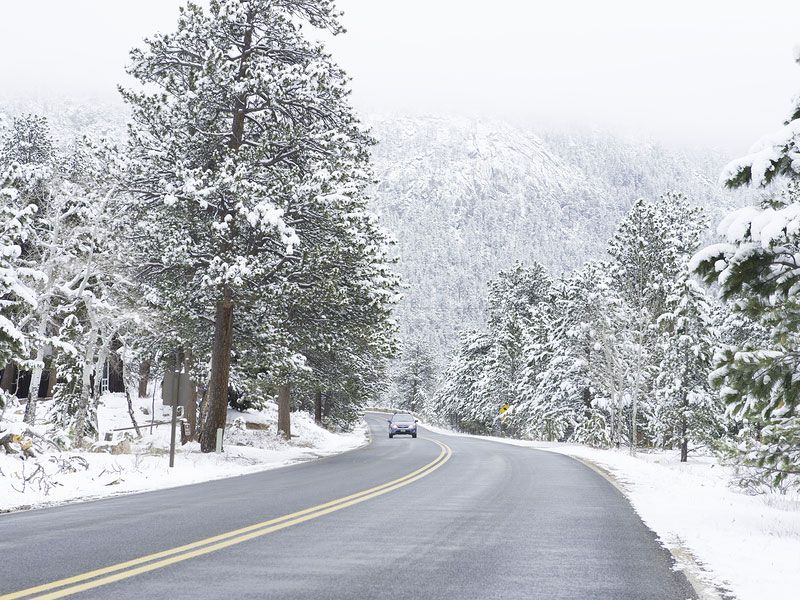
Photo by Bigstock
6) Stay Awake, Alert and Sober
We all know that the holiday season can often mean parties with large meals and the occasional drink or two. Unfortunately, it also means short days, snow squalls, the holiday rush and icy roads, and while normal driving takes lots of concentration, driving in these conditions requires even more care. Much like driving while under the influence of alcohol, driving while drowsy can have a negative effect on your ability to control a car, and when the two are combined, the effects are even worse. Make sure that you get adequate rest, especially before longer trips (and take periodic breaks to get some fresh air and stretch your legs), and make arrangements that don’t involve getting behind the wheel if you’ve had a few drinks without adequate time to sober up.
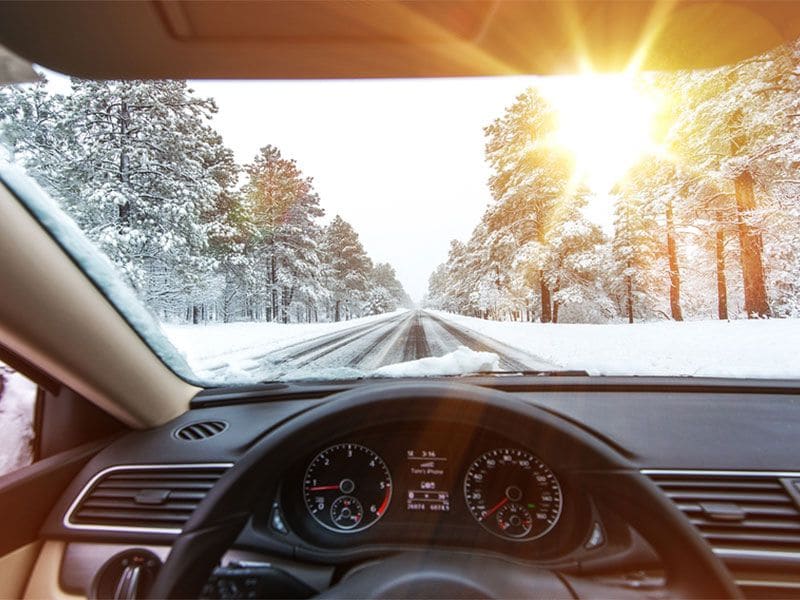
Photo by Bigstock
5) Clear Your Windows
Before you leave, take the time to do a good job clearing the windows of your car so that you have good outward vision. Use your snow brush and ice scraper to remove all the snow, ice and frost from all the windows, including the side windows. While you’re at it, remove all the snow and ice from the vehicle, including from the hood, trunk and roof to prevent it from blowing off and damaging someone else’s vehicle. While it’s true that a modern car warms up more quickly while being driven, you should still wait until the inside of the windows are clear before taking off. Again, verify that you have an adequate supply of wiper fluid in the reservoir (and in the jug in case you need a refill).
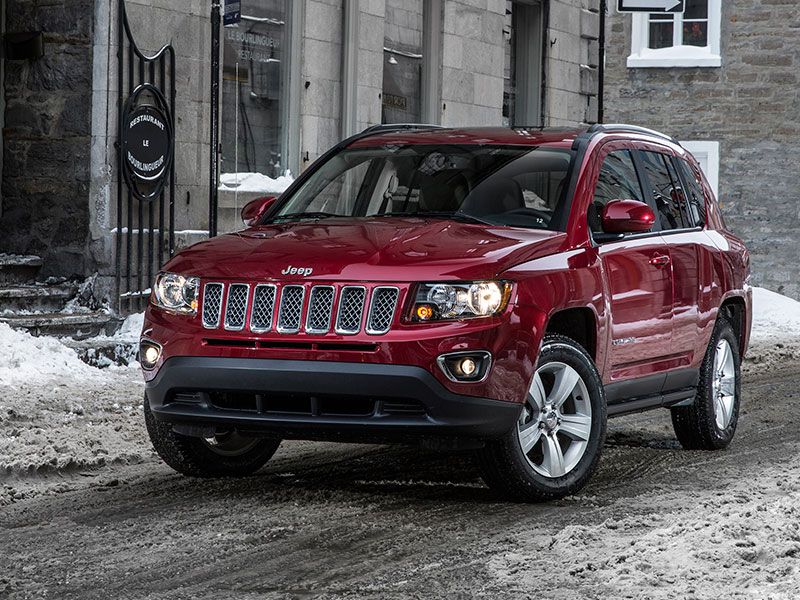
Photo by Fiat Chrysler Automobiles
4) Take Your Time, Drive Slowly and Leave Plenty of Space
When planning trips in the winter season, be sure to allow extra travel time, as well as time to clear the snow and ice from the vehicle. Once on the road, take your time and drive slowly. Every bit slower that you go makes it more likely that you’ll be able to stay on the road and avoid accidents, and if you provide yourself with extra time at the beginning of the journey, you’ll be less likely to try and rush to make up time at the end. While driving, allow extra space between vehicles, especially snow plows, which can throw up snow, gravel and salt (and you might as well take advantage of the groomed surface they leave behind). Provide someone with your travel plans before leaving, and check in with them when you arrive.
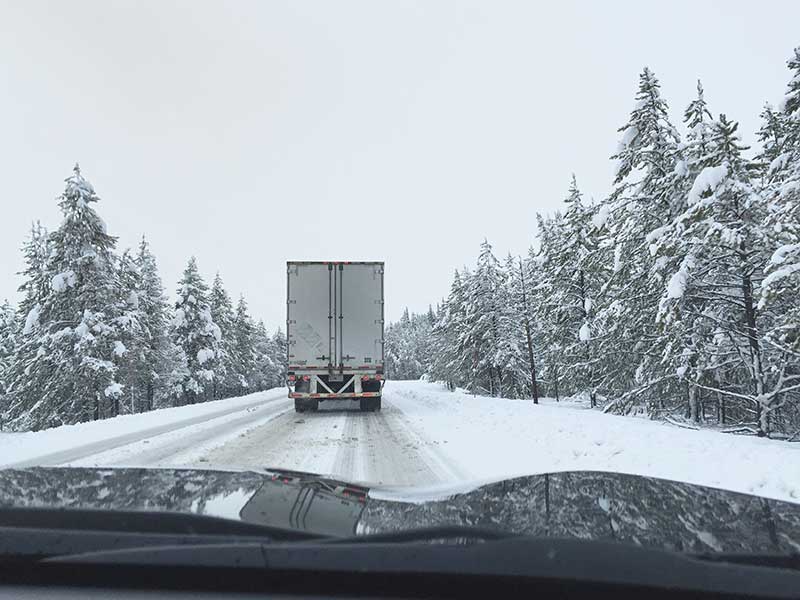
Photo by Joni Gray
3) Pay Extra Attention and Anticipate Other Drivers' Moves
Even if you’re driving slowly with the best winter tires, there are still hazards that spring up and need to be avoided, or at least acknowledged, when driving on potentially icy roads. Keep an eye on the road, looking for snow drifts, standing water, ice and other obstacles, as well as its general condition. Pay attention to other drivers, look two or three cars ahead, and try to anticipate other cars’ moves, giving yourself more time to respond. Try and give a wide berth to drivers who seem to rushing or out of control, as they can ruin your day even if you’ve done nothing wrong. Be aware of your surroundings and other vehicles around you, and have an "out" in case you need to change lanes to avoid an obstacle or accident.
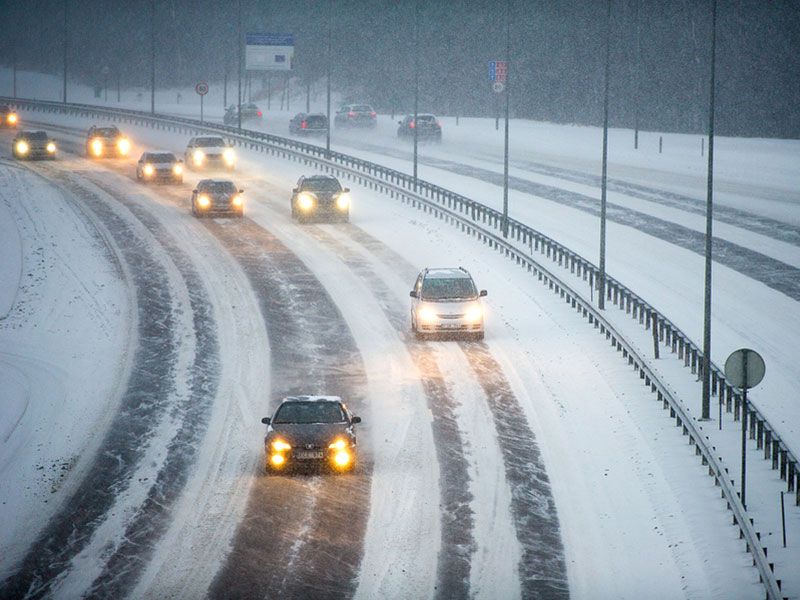
Photo by Bigstock
2) Gentle and Delicate Inputs
When driving on slippery surfaces like an icy road, try to keep your inputs as gentle and delicate as possible. Sudden or extreme inputs can cause the tires to lose grip, after which it can be hard to regain control. The exception is if your car is equipped with a working anti-lock brake system (ABS) and you need to perform an emergency stop; in that case, press the brake pedal as hard as possible and try to steer the car safely around the emergency. If you start to lose control, don’t suddenly lift off of the accelerator or slam on the brakes, as this will disturb the car’s balance and could cause you to lose control. Don't use cruise control, as it can lead to a loss of control in low traction situations.
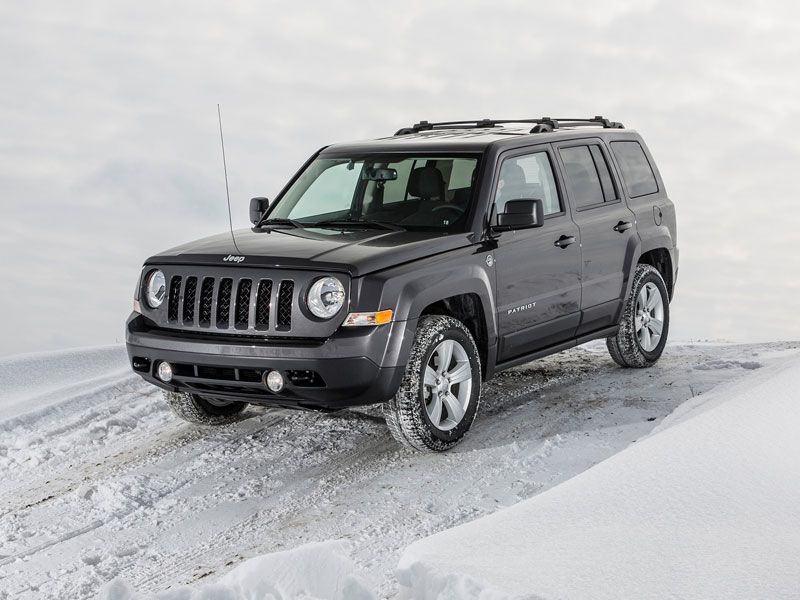
Photo by Fiat Chrysler Automobiles
1) If You Do Get Stranded...
Don’t panic. If you’ve followed the tips we’ve provided, you should be fairly well equipped to handle an emergency on icy roads and people will start missing you when you don’t arrive as scheduled. First, take a look around to determine your condition and that of those around you. If necessary, administer what first aid you can and call for an ambulance. Determine who else you may need to call (police, fire department, tow truck, emergency roadside assistance, etc.). Activate your emergency flashers and safely unfurl your emergency flag. Don’t get out of your car if there is a risk of getting hit by other vehicles, and don’t idle the car as it can cause carbon monoxide poisoning; instead, crack a window and carefully use an emergency candle to heat the car (without catching it on fire).
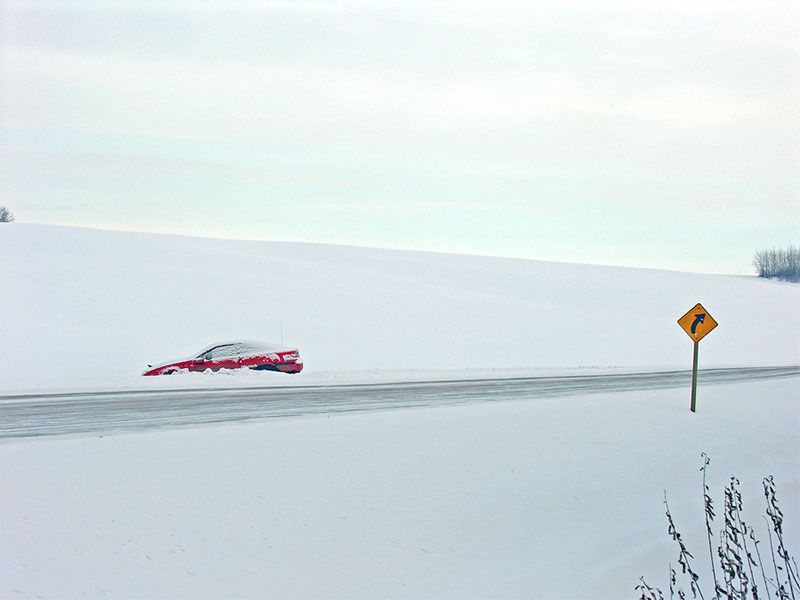
Photo by Bigstock